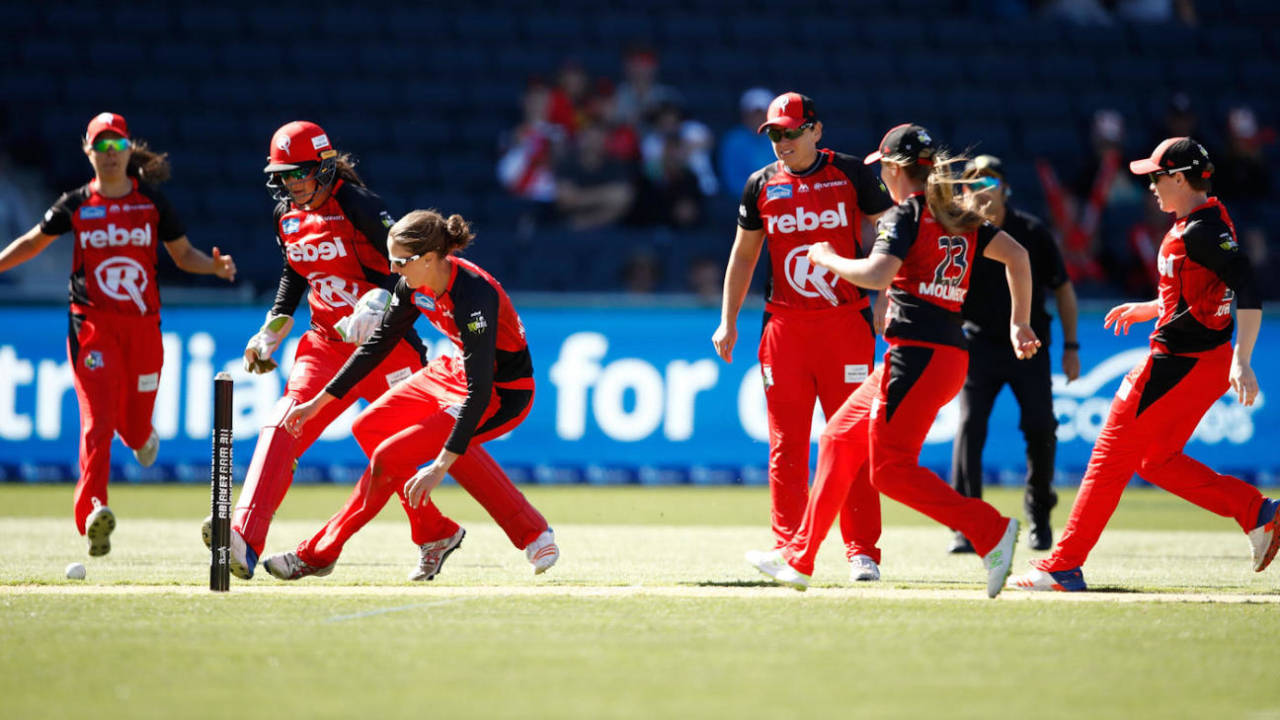Debate sounded about the Dead Ball law after an unusual gaffe from the Melbourne Renegades wicketkeeper
Emma Inglis nearly cost her team their
Women's Big Bash League encounter against the Sydney Sixers in Victoria on Wednesday.
In a dramatic finish, with the Sixers requiring three runs off the final ball, Inglis' premature celebrations inadvertently allowed a second run as Sixers tied the Renegades' score of 120. Renegades, however, prevailed in the one-over eliminator to spare their blushes.
With two to defend, Renegades offspinner
Amy Satterthwaite pitched up to
Sarah Aley, the Sixers No. 9, whose drive trickled down behind square off the inside edge.
With the throw from fine leg coming in accurately to Inglis, the two batsmen had just enough time for a single. However, Inglis, in her excitement, did not stand over the stumps and check an acceptance that the ball was dead.
Instead, she threw the ball in the air after collecting it cleanly, and allowed it to drop to the ground, leaving the ball still in play. Amid celebrations from the Renegades players, Aley showed sharp presence of mind to spot the opportunity quickly and took off for the second.
Satterthwaite seemed to be the only Renegades player to have understood the danger and began to frantically sprint towards the stumps. By the time Inglis had realised her blunder and turned around, Satterthwaite had swooped down on the ball. She dived towards the stumps with the ball in her outstretched right hand, but Aley had put in a timely dive of her own and Sixers secured the tie.
Once discussions with the umpires had subsided, players and fans alike studied the Dead Ball law, Law 20, with a debate breaking out on social media. Some claimed that the Law was somewhat contradictory and created a grey area as to when the ball was actually dead.
Law 20.2 clearly puts the onus upon the umpires to determine when the ball has come to rest, stating: "Whether the ball is finally settled or not is a matter for the umpire alone to decide."
Another relevant rule, Law 20.1.1.1, states that the ball becomes dead when "it is finally settled in the hands of the wicket-keeper or of the bowler." However, the Law goes on: "The ball shall be considered to be dead when it is clear to the bowler's end umpire that the fielding side and both batsmen at the wicket have ceased to regard it as in play."
*The MCC, the custodian of the Laws, backed the decision of the umpires. It said that since the bowler Satterthwaite reacted immediately after Inglis threw the ball, "clearly there is a member of the fielding side who believes it is still live.
"In fact, Aley doesn't set off for her second run until Satterthwaite is half-way down the pitch - at which point the ball cannot be dead under 20.1.2."
After the dramatic tie, the one-over eliminator also went to a last-ball finish. The Sixers lost two wickets as Renegades medium-pacer Hayley Jensen conceded just one four and restricted them to 8. Though the Renegades began with a first-ball four, Sixers stretched the game to the last ball, before Jess Cameron knocked off the requisite one run to seal the win.
The Renegades collected two points to move past the Adelaide Strikers into fourth position, while the Sixers remained in second despite their defeat.
* January 3, 2.30pm GMT The story has been updated with the MCC's reaction
